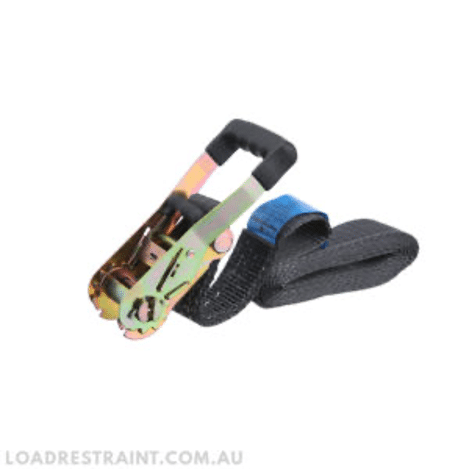Dune buggies are no strangers to Australians who love exploring off-road but the beach buggy is also a popular no-nonsense, light and cost-effective runabout. Constructed first in the 1960s, the beach or dune buggy design has developed over the years. Modern-day beach or dune buggies continue to be used for recreational and off-road activities.
Using buggy kits, Australians can build their own dune buggy and have it registered to be driven legally on the road. However, travelling in one interstate can be tedious which is why you’re probably exploring the option of towing yours on a trailer. Buggy owners can use load restraints such as tie down straps when securing them onto trailers, to make this go smoothly.
But what else do you need to know about transporting your sand dune buggy? Read on to find out!
Contents
What You Need to Know to Drive Your Beach Buggy on Australian Roads
It’s not that simple to register your dune buggy for use on public roads and regulations vary between different states. If you’re living in the Northern Territory, you can forget about using your recreational dune buggy for on-road purposes. Only if you can prove that your buggy is being used for a specific work-related task that can’t be done by a complying vehicle, permission may be granted.
In some states, beach buggies are allowed to be driven on public roads if it’s a four-seater model with a full-length VW chassis. Seat belts and roll-over bars are other additions that could see you through the certification process. A consulting engineer will advise you on your buggy design and sign off the final product for registration.
Other regulatory essential features could include pollution control systems and running your buggy on unleaded fuel.
So, before deciding to build or purchase a dune buggy for on-road and off-road purposes, check out your local state and territory regulations for use as a runabout in town.
Now, what are your options if you can’t drive your beach or dune buggy on public roads but want to have an off-road experience that’s not close to your home? Loading your buggy onto a trailer is the best solution and knowing how to do it safely keeps you within the law while preventing accidents from happening.
3 Tips for Transporting Your Sand Dune Buggy on a Trailer
1. Check Tow Vehicle and Trailer Compatibility
Before purchasing or hiring a trailer to transport your dune buggy, make sure your vehicle is compatible for safe towing of loads. Take into account the vehicle’s weight and configuration to ensure it can tow the trailer and buggy safely. Here are some considerations when exploring vehicle towing abilities:
- Rear-wheel drive offers maximum towing ability compared to heavier SUVs and four-wheel drive vehicles.
- Longer-wheelbase SUVs or trucks can tow more with better control of the trailer.
- A vehicle with a higher axle ratio has better pulling power but compromises fuel economy.
If you’re not sure about your vehicle’s towing abilities, speak to a trailer expert who will advise you on the best type for your needs.
2. Pick the Right Trailer
Flat trailers are best for towing sand dune buggies and depending on the weight of your buggy, a single-axle design is usually sufficient. These trailers can handle load weights of up to 2.500 pounds (1133kg). Beach buggies can weigh anything between 1,500 lbs (680kg) and 1,700 lbs (771kg) with some even weighing up to 2,000 lbs (907kg).
Enclosed trailers are heavier than the flat type, making it harder to tow. However, you don’t need an enclosed trailer to tow your beach buggy especially if you use the right loading gear such as tie down straps to secure it.
3. Use Quality Load Restraint Systems
Load restraint systems ensure your buggy is securely attached to the trailer for safe towing. Dune buggy tie downs will keep your off-road runabout in place while you’re towing it on public roads. This gives you better driving and braking control but for safe handling on the road consider weight distribution as well.
If the buggy is located too far back on the trailer it could cause it to fishtail, while placing it too close to the front could make your tow vehicle sag. Loading the buggy properly on the trailer keeps it balanced and ensures better control when towing. Some people use load binders for heavier loads weighing over 2,300kg so consider this if your buggy is larger than most.
Final Thoughts
Planning your route carefully, filling up with fuel before hitching the trailer and making sure your vehicle is road safe will make towing your buggy less stressful. Driving slowly, avoiding traffic congestion and braking early are other tips for safe and comfortable towing on interstate journeys.
Transporting your sand dune buggy for off-road experiences shouldn’t be complicated. Getting the right trailer, using a vehicle with sufficient towing ability and securing your buggy with quality load restraint gear will get you to your destination safely and ready for another exciting off-road adventure!

